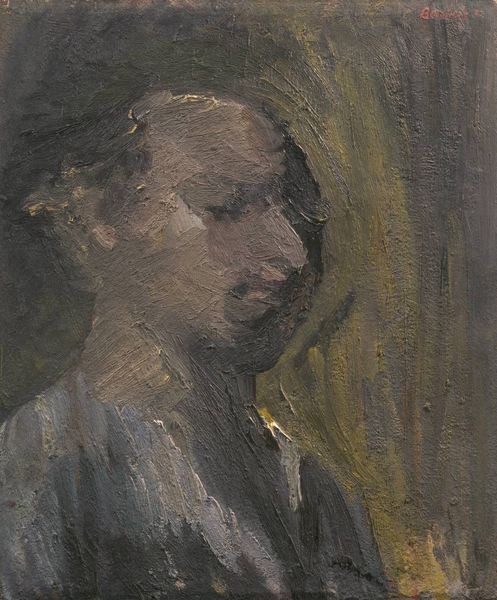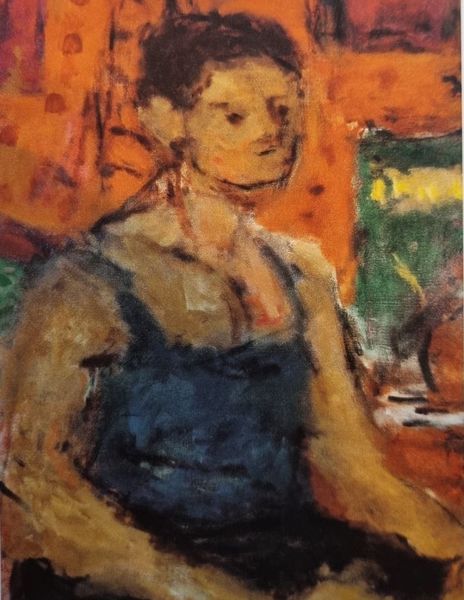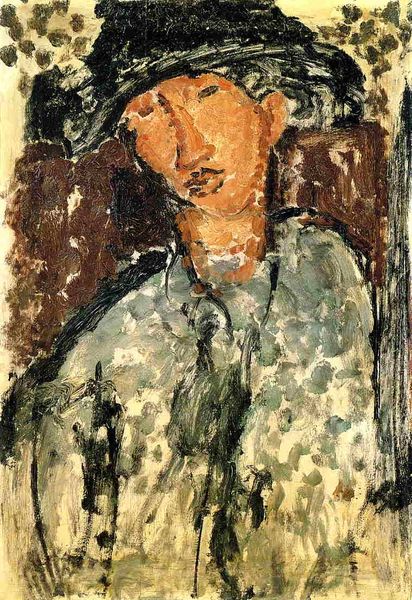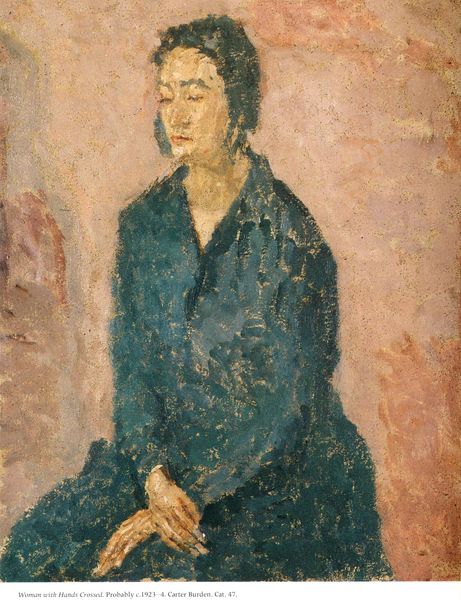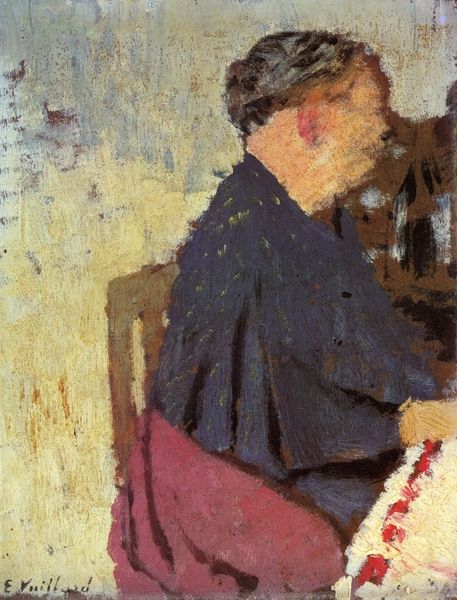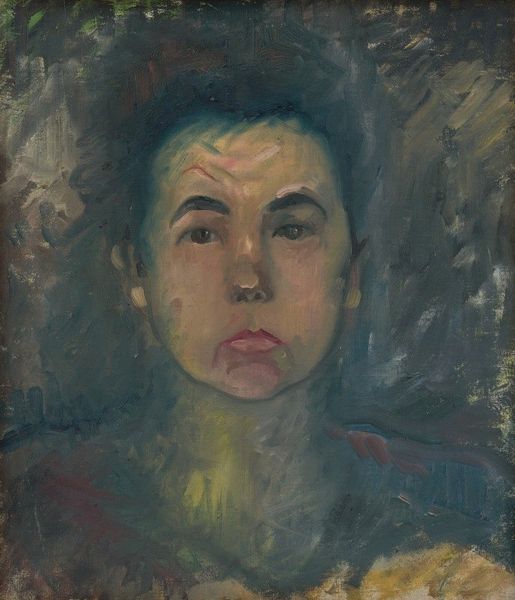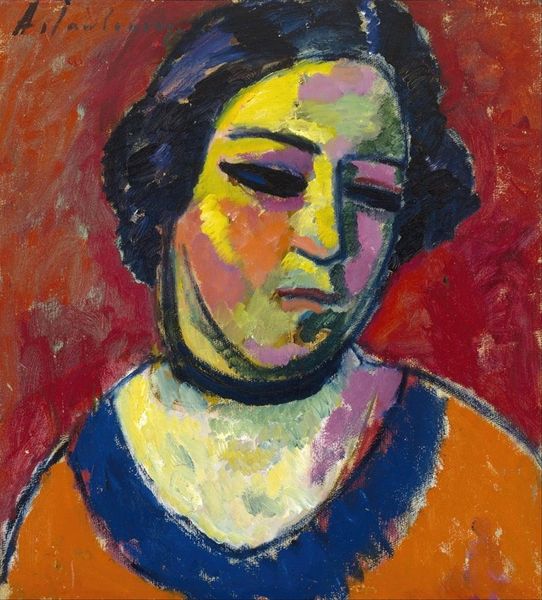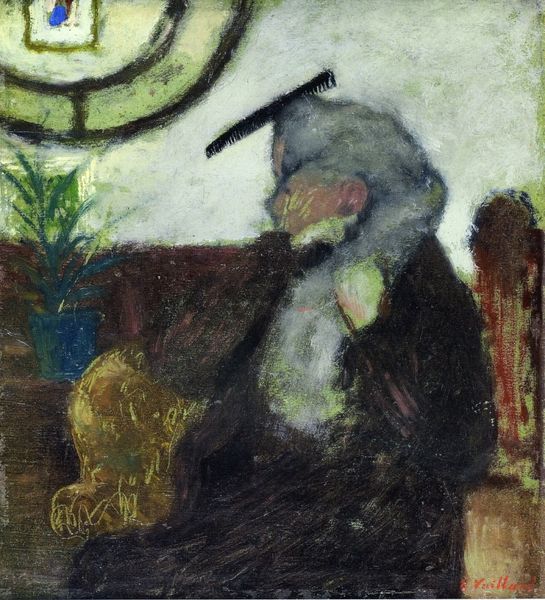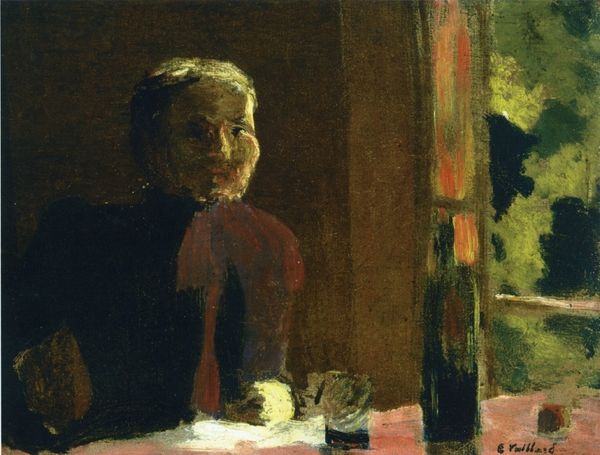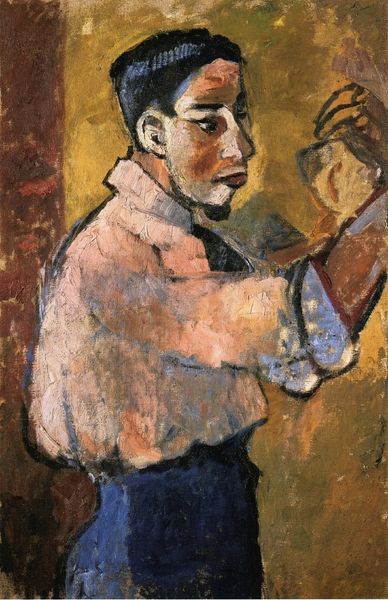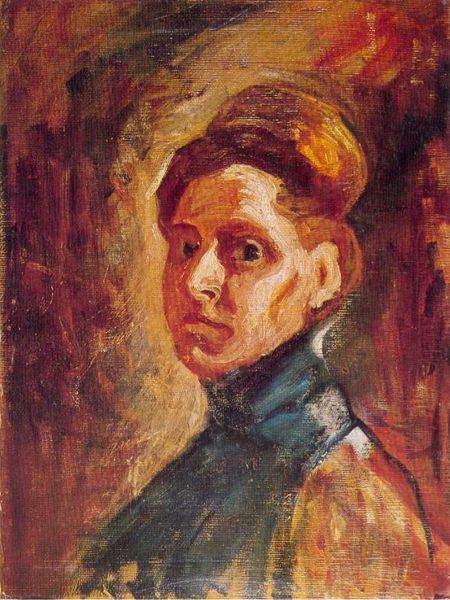
Dimensions: 46 x 56 cm
Copyright: Public domain
Curator: Pierre Bonnard’s “Self Portrait,” completed in 1945 using oil paint, offers a strikingly intimate portrayal. What are your initial thoughts? Editor: My first impression is its palpable melancholy. The subdued color palette, combined with Bonnard’s averted gaze, creates an atmosphere of introspective solitude. The hazy impasto and square color forms are suggestive of both the built world and inner mental spaces. Curator: Precisely. Bonnard’s application of impasto adds a textural element, blurring the line between the painted surface and the represented subject. We see here the work of someone rooted in the Post-Impressionist moment, making his works through intense artistic and social production during a challenging point in recent history. The thick paint emphasizes the hand of the artist, reminding us of the physical labor involved in creating this intensely subjective, bourgeois vision of an aging man. Editor: The formal elements all point to a psychological dimension. Note the almost muted shades. They create a certain tonal ambiguity. The artist’s face is obscured by shadows and a lowered gaze. There's a strong sense of psychological interiority which reflects both Bonnard’s personal journey and, arguably, the broader anxieties of the time. Curator: Consider that "intimism," deeply ingrained in Bonnard's practice, was a deliberate negotiation of domesticity under pressure and his choice to dwell and refine it. Bonnard spent much of the Second World War confined with his wife in his villa, perhaps accounting for its introspective nature. Do you think the lack of explicit context distracts the contemporary viewer from more material meanings? Editor: Not necessarily. I think his exploration of light and shadow, and how that relates to the figure depicted, offers a means of symbolic investigation that we as the viewer can also perform as the subject of artistic spectatorship. It becomes not only about his gaze, but the gaze that meets it. Curator: A vital reminder that art, especially portraits and self-portraits, is always a conversation about production and audience as well. His negotiation of pictorial intimacy is always at odds with an art world that has consistently refused it any real critical seriousness. Editor: It’s a dynamic interpretation of the work and its function for sure. Thanks for illuminating aspects of "Self Portrait" that aren't immediately evident. Curator: And to you, for helping unpack the layered formalism at play within.
Comments
No comments
Be the first to comment and join the conversation on the ultimate creative platform.

